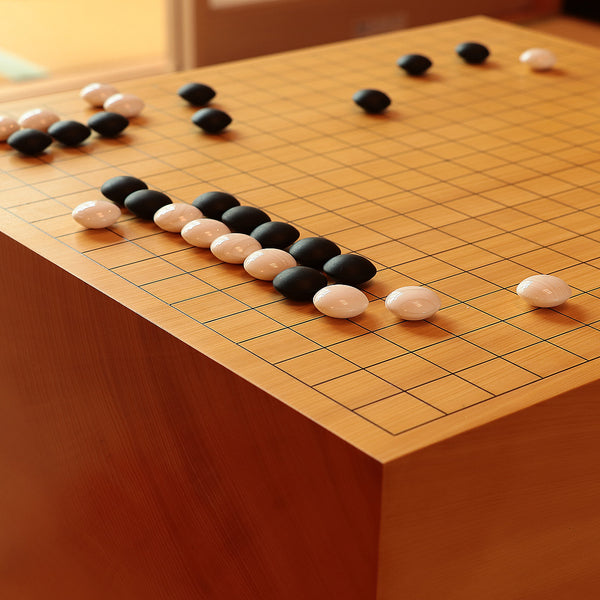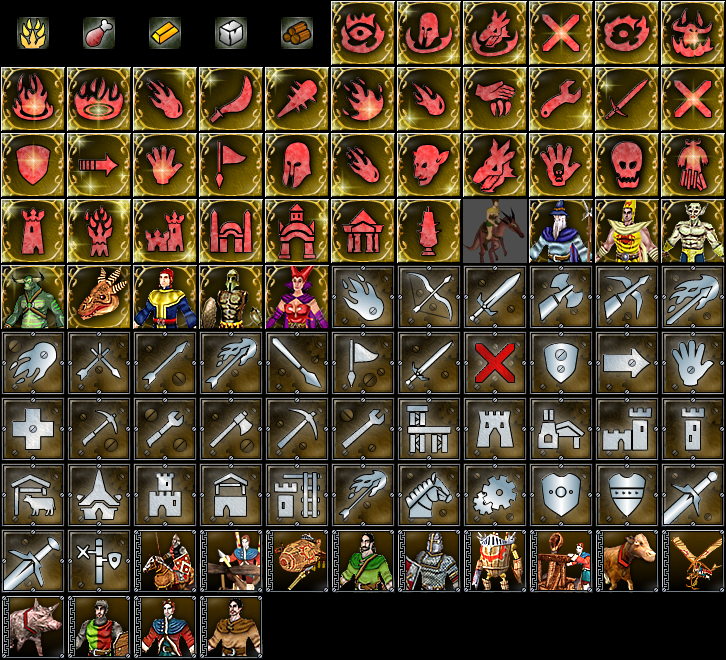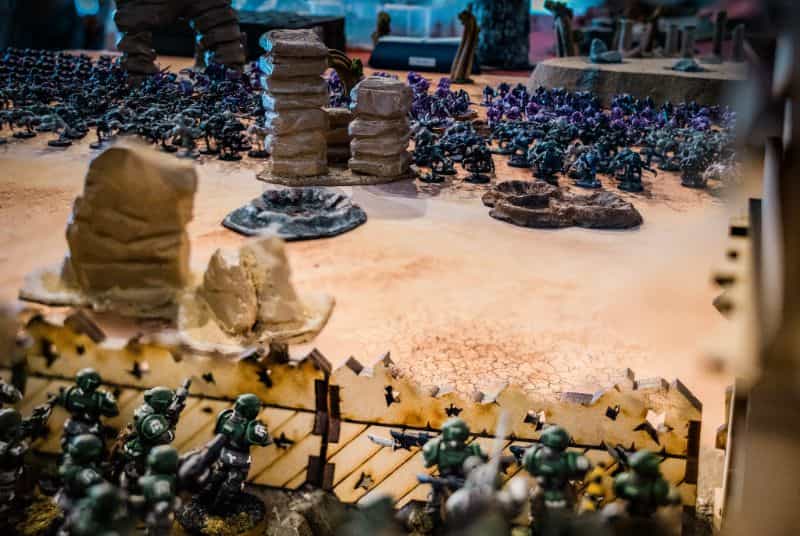The Art of the Digital General: An Introduction to Strategy Gaming
From the ancient battlefields of Go and Chess to the sprawling digital empires of today, the desire to outthink, outmaneuver, and outlast an opponent is a fundamental part of human competition. In the world of Video Games, this desire finds its purest expression in the strategy genre. Strategy games are more than just interactive entertainment; they are complex, dynamic puzzles that challenge our intellect, foresight, and ability to adapt under pressure. They are the ultimate test of the armchair general, the corporate CEO, and the grand planner. Whether you’re meticulously plotting your civilization’s technological ascent over centuries in a turn-based epic or executing split-second tactical commands in a frantic real-time skirmish, the core appeal remains the same: victory achieved through superior intellect and planning. This genre, with its deep roots and ever-branching evolution, continues to be a cornerstone of the Gaming Industry, captivating millions of players across PC Gaming and Console Gaming platforms alike. This article delves into the grand design of strategy games, exploring their foundational pillars, their constant evolution, and the intricate skills required to master them.
The Pillars of Strategy: Understanding the Core Subgenres
While the umbrella of “strategy” is vast, the genre is traditionally built upon a few key pillars that define the player experience. Understanding these foundational subgenres is crucial to appreciating the incredible diversity and depth the category offers. From the deliberate pace of turn-based titles to the high-octane action of real-time combat, each style tests a different facet of a player’s strategic acumen.
Real-Time vs. Turn-Based: The Great Divide
The most fundamental split in strategy gaming is the handling of time. Turn-Based Strategy (TBS) games, like the legendary Sid Meier’s Civilization series or the tactical squad-based combat of XCOM 2, operate in discrete turns. Players have ample time to analyze the situation, consider every possible move, and execute their commands without the pressure of a ticking clock. This format emphasizes long-term planning, careful positioning, and deliberate decision-making. Conversely, Real-Time Strategy (RTS) games, defined by classics like StarCraft II and Age of Empires IV, unfold continuously. Players must manage their economy, build their base, produce units, and control armies simultaneously and in real-time. RTS games demand not only strategic foresight but also high Actions Per Minute (APM), multitasking ability, and rapid tactical reactions. This dichotomy is a core part of Gaming History, shaping two distinct schools of strategic thought and player skill sets.
The 4X Formula: eXplore, eXpand, eXploit, eXterminate
A dominant force within the turn-based world is the 4X genre. This acronym perfectly encapsulates the gameplay loop that has made titles like Stellaris and Endless Legend so addictive. Players begin with a fledgling empire and must:
- eXplore: Uncover the map, revealing new lands, resources, and rival civilizations.
- eXpand: Grow their territory by founding new cities or colonizing new systems.
- eXploit: Harvest resources and leverage the unique properties of their territory to build their economy and research new technologies.
- eXterminate: Engage in diplomacy, subterfuge, or outright warfare to overcome and eliminate rival factions.
Grand Strategy and Tactical RPGs: A Matter of Scale
Beyond the core divide, strategy games also vary immensely in scale. Grand Strategy Games, a genre perfected by Paradox Interactive with titles like Crusader Kings III and Europa Universalis IV, place the player at the head of a nation or dynasty, managing intricate systems of economy, politics, diplomacy, and warfare over vast historical periods. The focus is on the macro-level, long-term statecraft. In stark contrast, Tactical RPGs (TRPGs) like Fire Emblem: Three Houses and Baldur’s Gate 3‘s combat system zoom in on squad-level combat. In these games, every unit is a distinct character with unique abilities, equipment, and progression. Success hinges on clever positioning, ability synergy, and exploiting environmental advantages on a grid-based map. These games blend the deep character development of RPG Games with the tactical depth of strategy.

The Evolution of Strategy: Blurring Lines and Creating New Frontiers
The modern Gaming Community is witnessing a fascinating era of genre hybridization. Developers are increasingly borrowing and blending mechanics, pushing the boundaries of what a strategy game can be. This evolution is driven by both creative ambition and technological advancement, leading to innovative experiences that defy easy categorization.
The Rise of the Hybrid Genre
Pure strategy games remain popular, but some of the most exciting recent Game Releases exist in the spaces between genres. Games like Frostpunk fuse the resource management and base-building of a strategy game with the high-stakes narrative and moral dilemmas of a survival game. The deck-building roguelike genre, exemplified by Slay the Spire, is fundamentally a turn-based strategy game where your “units” and “abilities” are the cards in your deck. Even narrative-focused titles are incorporating strategic layers, forcing players to manage resources, relationships, or information to navigate a branching story. This trend shows that strategic decision-making is a powerful mechanic that can enhance nearly any type of game, a key topic in modern Game Design discussions.
From RTS to MOBA: A Competitive Revolution
Perhaps the most significant evolution in strategy gaming came from the Game Mods community. Defense of the Ancients (DotA), a custom map for the RTS game Warcraft III: The Frozen Throne, stripped away base-building and resource gathering, focusing instead on controlling a single powerful hero unit in team-based combat. This mod spawned an entire genre: the MOBA (Multiplayer Online Battle Arena). Today, titles like League of Legends and Dota 2 are titans of Competitive Gaming and dominate Esports News. They retain the strategic DNA of their RTS ancestors—map control, tactical positioning, and resource advantage (gold and experience)—but package it in a more action-oriented, hero-focused format that has proven immensely popular on platforms like Twitch, shaping much of modern Game Streaming culture.
The Impact of Modern Gaming Tech
Technological leaps have been a primary catalyst for the genre’s growth. The processing power of modern Gaming PCs and consoles allows for incredibly complex AI, simulating the intricate political and economic models of Grand Strategy games or commanding thousands of individual units in massive RTS battles. Powerful Graphics Cards render these conflicts in stunning detail on high-refresh-rate Gaming Monitors. Furthermore, the rise of Cloud Gaming services is making these often-demanding games accessible on a wider range of devices, including Gaming Laptops and even mobile phones, bringing deep strategic experiences to the world of Mobile Gaming.
Mastering the Art: Player Skills and Design Philosophy
Excelling at strategy games requires a unique blend of cognitive skills, while designing them presents a formidable challenge. It’s a delicate dance between creating deep, rewarding systems and ensuring the game is approachable for newcomers.
The Player’s Mindset: From Micro to Macro

A successful strategy player must constantly balance two perspectives:
- Macro (Strategic) Management: This is the high-level, long-term planning. It involves managing your economy, planning your research path, deciding on your overall army composition, and understanding your win condition. In a 4X game, this is your empire’s overarching plan for victory.
- Micro (Tactical) Management: This involves the second-to-second execution of your plan. In an RTS, it’s controlling individual units to dodge attacks or focus fire on key targets. In a TRPG, it’s the precise positioning of a single soldier to gain a flanking bonus.
Best Practices for Aspiring Strategists
Improving at strategy games is a journey of continuous learning. Here are some actionable tips:
- Study the Meta: Understand the current dominant strategies, unit compositions, and build orders for the game you’re playing. Resources like community forums, wikis, and pro-player streams on Twitch are invaluable.
- Analyze Your Replays: Most competitive strategy games allow you to watch replays of your matches. Analyze your losses to identify mistakes in your macro plan or micro execution. What could you have done differently?
- Focus on Fundamentals: Before trying complex strategies, master the basics. In an RTS, this means perfecting your economic build order. In a turn-based game, it means deeply understanding the core combat mechanics.
- Learn from the Community: The Gaming Community is one of your best resources. Engage in discussions, watch tutorials, and don’t be afraid to ask for advice.
The Designer’s Challenge: Balancing Depth and Accessibility
For developers working in Unity News or Unreal Engine News, the greatest challenge in Game Development for this genre is the “complexity cliff.” A game needs sufficient depth to remain engaging for hundreds of hours, but too much complexity upfront can overwhelm and alienate new players. Successful designs often employ “easy to learn, difficult to master” philosophies. This is achieved through comprehensive tutorials, a clean and informative UI, and systems that gradually reveal their depth as the player becomes more experienced. The success of Indie Games like Into the Breach lies in its presentation of incredibly deep tactical options through a simple, clear interface.
The Modern Landscape and Future Horizons
The strategy genre is more vibrant and diverse than ever. From massive AAA Games to innovative indie titles, the landscape is rich with opportunity and poised for exciting future developments that will redefine strategic play.

The Indie Revolution and Niche Dominance
While major studios continue to produce high-quality strategy games, the indie scene has become a crucible of innovation. Developers are exploring niche concepts that larger publishers might deem too risky. Games like FTL: Faster Than Light (sci-fi roguelike spaceship management) and RimWorld (sci-fi colony simulation) have become massive successes, proving a strong market for deep, complex, and unique strategic experiences. Platforms like Steam and the Epic Games Store, often featured in Steam News and Epic Games News, have been instrumental in giving these innovative titles a global platform.
The Future: AI, VR, and Procedural Generation
Looking ahead, several technological trends are set to shape the future of strategy games. Advances in AI will lead to more dynamic, unpredictable, and human-like opponents that can adapt to player strategies in real-time. VR Gaming, while still nascent in the genre, holds immense potential for creating immersive “war room” experiences, allowing players to command their forces from a holographic tabletop. Imagine controlling armies with intuitive hand gestures using advanced Game Controllers or specialized peripherals. Finally, procedural generation will continue to enhance replayability, creating unique maps, scenarios, and challenges every time you play, ensuring that the strategic puzzle is never truly solved.
Conclusion: The Enduring Command
Strategy games represent one of the most intellectually rewarding genres in all of interactive entertainment. Their enduring appeal lies in their ability to challenge our minds, forcing us to think critically, plan ahead, and adapt to ever-changing circumstances. From the methodical, turn-based conquests of historical empires to the lightning-fast tactical duels of futuristic armies, the genre offers an unparalleled breadth of experiences. As technology advances and game design philosophies evolve, the lines between genres will continue to blur, but the core thrill of crafting a brilliant plan and watching it come to fruition will remain. Whether you are a seasoned veteran of countless campaigns or a newcomer looking for a deeper challenge, the world of strategy games offers a vast and rewarding landscape waiting to be commanded.











